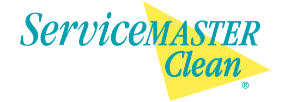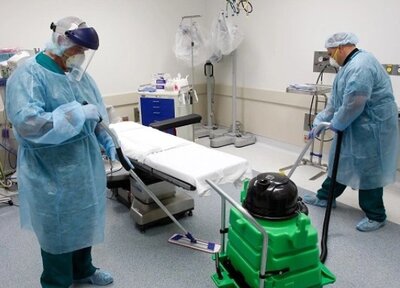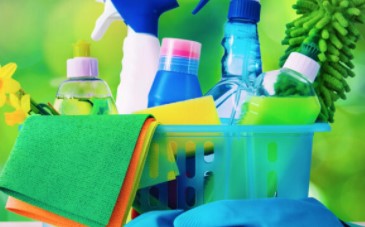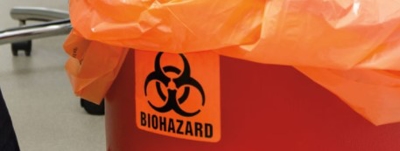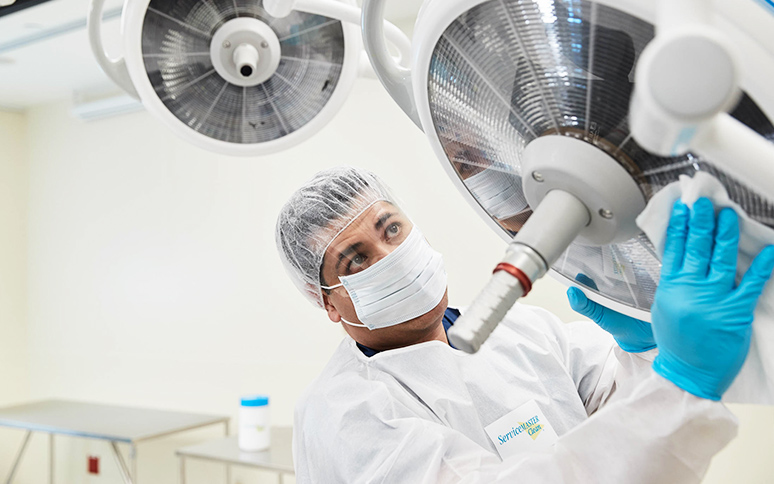Healthcare-acquired Infection Vs. Community-acquired Infections: What’s the Difference?
At a healthcare facility, maintaining a clean and disinfected environment to prevent the spread of germs and infections is critical. Learn about the differences between healthcare-associated infections (HAIs) and community-acquired infections (CAIs) to keep your staff and patients safe with these helpful tips from the professionals at ServiceMaster Clean.
What Are Healthcare-Associated Infections?
Healthcare-associated infections, or HAIs, are secondary infections patients may acquire while receiving treatment for a different illness at a healthcare facility. Although HAIs are entirely preventable, many patients suffer from them every year. In fact, according to the Centers for Disease Control and Prevention (CDC), about one in 31 hospital patients has at least one HAI on any given day.
Symptoms of HAIs
To classify as an HAI, symptoms must occur up to 48 hours after admission to the healthcare facility, up to three days after discharge or up to 30 days after a surgical procedure. While symptoms may differ depending on the infection, the most common symptoms of HAIs include:
- Discharge from a surgical wound
- Headache
- Diarrhea
- Cough
- Shortness of breath
- Vomiting
- Fever
Most Common Types of HAIs
HAIs can take many forms. The most common types of hospital-acquired infections include:
- Catheter-associated urinary tract infections (CAUTI)
- Surgical site infections (SSIs)
- Central line-associated bloodstream infections (CLABSI)
- Ventilator-associated pneumonia (VAP)
What Causes HAIs
HAIs can be acquired in a variety of ways, including the improper use of medical equipment, improper disinfecting practices, and patient-to-patient contact. Since pathogens that cause HAIs can live on surfaces for long periods of time, it’s crucial to clean and disinfect all surfaces regularly to help prevent them from spreading.
What Are Community-Acquired Infections?
Community-acquired infections, or CAIs, are infections that are contracted outside of a healthcare setting. Patients can expose other patients to CAIs upon admission. Unless the chain of infection is broken, a healthcare facility can be put at risk of an infection outbreak.
Symptoms of CAIs
Each type of CAI has its own set of symptoms. General symptoms that apply to a number of infections include muscle aches, fever, fatigue, diarrhea and coughing.
Most Common Types of CAIs
One of the most common CAIs is pneumonia, a leading cause of mortality and morbidity worldwide. Other types of community-acquired infections include:
- Norovirus
- Influenza
- Botulism
- Hepatitis C
- Human immunodeficiency virus (HIV)
What Causes CAIs
Community-acquired infections can be caused by a variety of pathogens such as viruses, bacteria, parasites and fungi. While some infections can be spread from person to person, others are transmitted through bites from animals or insects. Others can be caused by contaminated food ingestion or exposure to harmful environmental organisms.
How to Prevent HAIs and CAIs
There are many things you can do to protect your staff and patients against HAIs and CAIs. The most important step is to ensure your staff follows proper hand hygiene. Healthcare workers should wash hands both before and after treating a patient. Staff should also use the right personal protective equipment (PPE) when treating patients. This may include wearing masks, gloves and gowns.
The most important step in preventing the spread of infection in a healthcare facility is to thoroughly disinfect surfaces. High-touch surfaces like door knobs, food trays, bed rails, light switches and bathrooms should be disinfected regularly.
If you need help maintaining a clean and disinfected medical facility, call on the professionals at ServiceMaster Clean. Our patient-centered cleaning services can help with risk reduction, patient environment improvement, and infection prevention. We follow guidelines and protocols set forth by leading organizations like the CDC to help ensure your facility is always receiving the highest standard of clean. Contact us today to learn how we can help keep your environment healthy.
